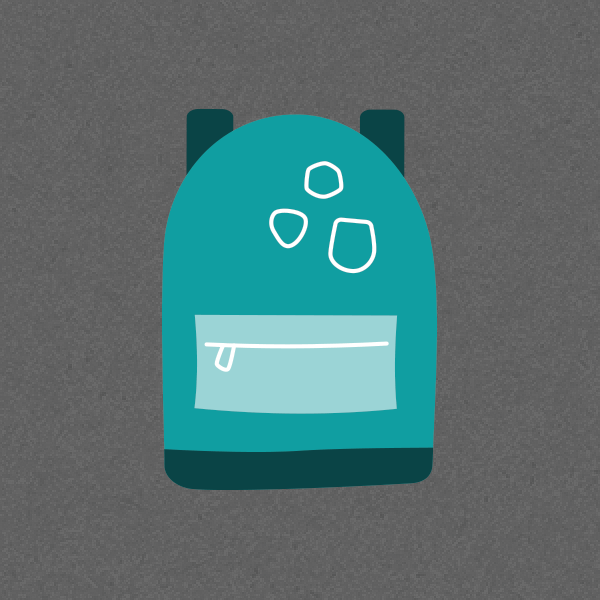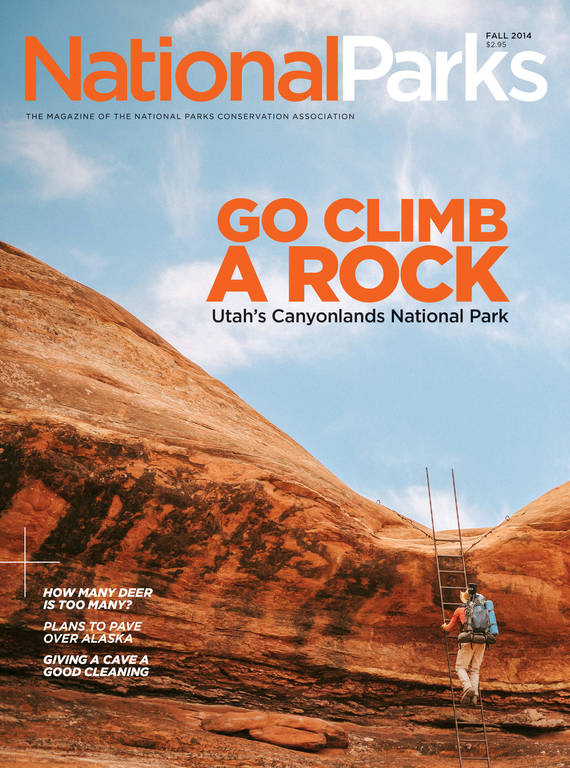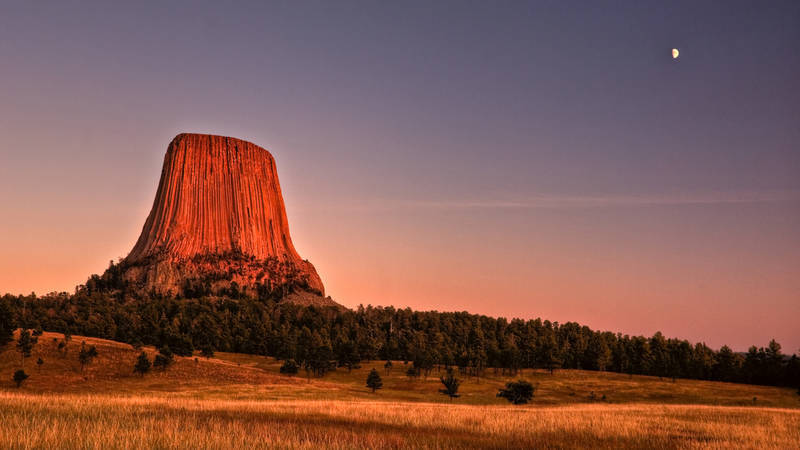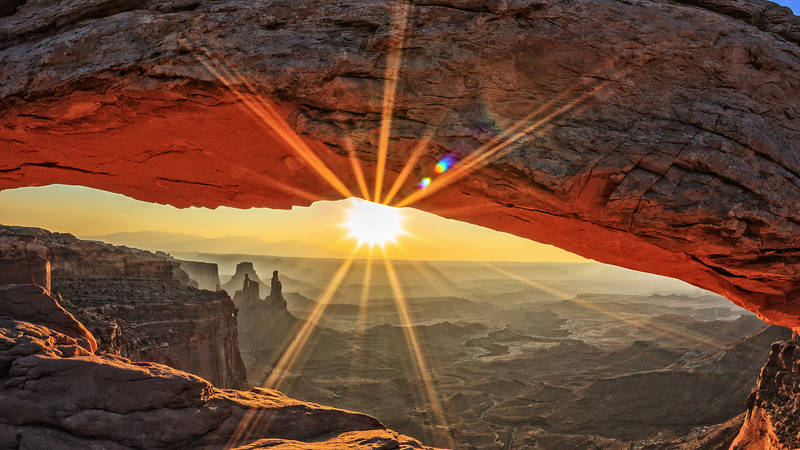Fall 2014
A Billion-Dollar Driveway
A life-long resident of Alaska worries a road would destroy the wilderness he knows and loves.
In the darkness of my wall tent I claw up through a nightmare, struggling to get my head out of my sleeping bag, fighting frost around the frozen drawstring. Instinctively my hands feel along the caribou hide I’m sleeping on, to touch my flashlight. Outside, nearby in the night, wolf voices fill the air. Howls. I feel my face smile in surprise and awe. I lean past my pile of firewood and flip aside the canvas flaps of the tent, to step barefoot onto the snow.
Above the brush, the stars are sharp and a quarter moon is silver up there. The mountains are close here on the upper Nuna River, dimly visible towering against the night sky. Now the night is quiet again, that huge silence of the Arctic. I shiver, shirtless and only in my long-johns, straining my ears until my feet begin to burn and I have to hurry inside to the welcoming warmth of my caribou hide. Still, I’m smiling in the dark, alone here, and not at all alone.
It isn’t until I lie back down and stare into the million dots of darkness that I remember the nightmare I was having when the wolves woke me. It was one I have a couple of times each year—where someone has built roads all around Paungaqtaugruk.
Twenty miles south—out of this valley and down the Nuna—drifted under snow is my family’s sod igloo, where I was born at Paungaqtaugruk, on the Kobuk River. Back then, 50 years ago, it was surrounded by wilderness. And today? Today, in most ways this land is that same wild place.
In my dream, condominiums stretched like ivory dice out onto the tundra. Gravel pits marred the distant slopes, low cement walls lined the riverbanks. A bridge arched over the river, and yellow dump trucks crossed the metal span. I stood in my buried doorway, sick and saddened.
Unfortunately, this vision will not fade forever with morning coffee. Instead, my nightmare is on Alaska governor Sean Parnell’s desk, right now, at the top of his wish list. In the past three years he has funneled $25 million toward his quest to send bulldozers bashing a highway across the face of the Brooks Range, to build an industrial mining road to the copper deposits of the Ambler region. He calls this half-billion-dollar proposed project “Roads to Resources.”
The road would fork off from that other former-wilderness road, the Pipeline Haul Road, and slice through some of the most remote land left on the planet, including the Gates of the Arctic National Preserve. The price tag for this massive venture—stretching 220 miles across tundra, taiga, and wetlands and requiring 12 to 15 major bridges—would almost certainly rise far above the present estimate, to upwards of $1 billion.
If built, this road into the heart of the Brooks Range won’t be rolled up and retired when the copper runs out, as has been suggested. In all likelihood, it would pave the way for future roads to crisscross the Northwest Arctic.
The Road to Ruin?
In the morning I blink awake in gray light, staring up at the drab weave of my family’s 40-year-old tent. Frost on the canvas tells me it’s 20 below. Slowly, I sort my night—real from imaginary—and my mind tenuously tests truths. From the tundra, the chuckling comment of a ptarmigan makes me sigh in relief. I build a fire, make coffee, eat, and stuff spare socks and beaver mittens, dried caribou, and bear fat into a small pack.
Outside, my snowshoe bindings are stiff and icy. Looking downstream, the only recent building development I see is a distant windblown beaver lodge. I picture the family of beavers hunched in their dark home, and I feel suddenly lonely and windblown myself, stricken by the thought of all these creatures in this beautiful alternate universe—nature—equally in the dark. All so unaware of a colossal storm on the horizon; the corporate world slowly swiveling its massive might in this direction. Machines readying other machines to come take this wilderness apart, to turn it upside down, strain out its metal treasures, and leave a wake of rock rubble.
From the copper deposits on the upper Kobuk to the zinc and coal near the Bering coast, the mineral pickings of the Northwest Arctic stretch on and on. If the governor’s “Road to Ruin,” as some of us call it, is built, industrial haul roads could eventually spider web from Ambler south to Nome, west to Red Dog Mine, and north to the Lisburne coal fields, the Chukchi oil fields, and other untapped treasures throughout this region of the Arctic. These roads would likely cut through the Selawik National Wildlife Refuge, Kobuk Valley National Park, and Noatak National Preserve, not to mention innumerable caribou migration routes.
For much of my adult life, I’ve roamed the Brooks Range—from Anaktuvuk to the Helpmejack Hills, from the Utukok headwaters to the Chukchi coast—often alone, always with a camera and a rifle, hunting for food and hunting for something else, too. Some sort of inhaling of wildness, or maybe simply a mountain-range-sized version of spending time with a loved one.
Always on this barren land I’ve found beauty and sustenance intertwined under the huge sky: berries and big bears, musk ox, beaver, wolves and wolverine, and the winding rivers and tundra and mountains without names. For me, no view from any road anywhere has ever felt this way; no city has ever given me this feeling of providence.
A Long Way from Anywhere
In the evening, as twilight paints the sky, I return to my tent and build a fire of dead willows. I thaw my gear and eat dried caribou and bear fat as snow melts for water. In the night, if the wolves come, they keep their voices low. I lie awake on my caribou hide for a long time, thinking, the way I did as a kid in the back of our sod igloo. Back then, as a child becoming aware of the world, to me, North always meant mountains and wilderness, all the way to the North Pole and on down the far side of the Arctic. I thought of these mountains, the Brooks Range, as the safest part of the world, where there were virtually no people and as a result, the animals could live and have their own—albeit harsh—piece of the planet. It was a place also where people who lived off the land could search and always find food and clean water. The Brooks Range was that. And mostly this wilderness still is that same safe place for nature and for subsistence hunter alike.
In other ways, these past 50 years have made this a drastically changed landscape for human inhabitants. Now snowmobiles have replaced dog teams, and a maze of confusing federal, state, and Native land ownership overlays the map, with overlapping rules and regulations, and countless airplanes coming and going from villages, bringing service providers, Internet access, iPhones, and readily available Miley Cyrus YouTube videos, Doritos, Pepsi, Pampers, and all the rest.
For all my life, we’ve known of the threat of a road from the Outside, allowing people and industry to flood into this wild land. Before I was born, Kennecott Copper sent geologists up the Kobuk River. On a tundra ridge above Onion Portage—that famed caribou crossing and archaeological site—sits what local Inupiat call “The Copper Cabin.” It was built by Kennecott men who knew the copper was here. The framers of the Alaska National Interests Land Conservation Act (ANILCA) also knew the mountains here are made of minerals, and penciled national park boundaries accordingly. For decades, former senator Frank Murkowski and other champions of development struggled to get at the Ambler Mining District. Their main difficulty was one of the Brooks Range’s best features—it’s a long way from everywhere.
NPCA @WORK
Gov. Parnell and his supporters are simply the latest and most powerful people on the trail to this treasure. On his side he has the state coffers, the local Native corporation, and Canadian mining conglomerates. What’s not quite so comfortably in Parnell’s camp are the Inupiaq and Athabaskan tribes in the path of his destruction. Their land and subsistence lifestyle are part of what the State of Alaska is giving away in this monumental corporate handout. Their traditions—already suffering severe intrusions—will not survive a train of trucks thundering across their ancestral homeland. They know this, and they are afraid.
Local residents have been given random reassurances: Don’t concern yourself, all the rivers will remain clean (this while open-pit mines would expose hundreds of millions of metric tons of copper ore and exponentially more sulfide acid-releasing rocks). They’ve been told that a road will provide cheaper fuel and access to shopping in Fairbanks, and make for easier travel. And that no Outsiders will be allowed on the road, no private vehicles, no public access. Possibly the road would even be abandoned when the copper is all hauled away.
These promises have shifted to appease the public. No one has ever quite explained or admitted that no access would mean no villagers driving to Walmart. But if the road were public, no law could prevent what locals here fear most—an onslaught of Outside sport hunters in camouflage, driving pickup trucks, towing snowmobile trailers and boats, coming to shoot animals for entertainment on lands Natives traditionally use to feed themselves.
Here, no one has to wonder how Alaska’s current governor—Sarah Palin’s running mate and successor—feels about wolves, caribou, or subsistence hunting. We know Juneau lawmakers don’t gather salmon, grayling, or sheefish from the watersheds their dozers and dump trucks intend to cross. We know their meat doesn’t come from these mountains. They live in another world, where food comes from Safeway, and where billions of dollars are lined up like dominoes already falling, ready to move mountains to take what they want from the Arctic, our home.
Jobs vs. Wilderness

National Parks
You can read this and other stories about history, nature, culture, art, conservation, travel, science and more in National Parks magazine. Your tax-deductible membership donation of $25 or more entitles…
See more ›After a lifetime spent in the Arctic, with so many meals gathered here, I can’t fathom trading this pristine land for a few hundred jobs and a line of dusty trucks hauling ore away to a foreigner’s bank. I can’t understand why anyone would tear open our last great wilderness, pollute land and rivers, and wreck Native cultures for copper, lead, zinc, and gold—minerals we’re busy throwing away in other mountains we call landfills. Why is our state so desperately eager to conduct massive corporate welfare—to hand Alaska to foreign mega-conglomerates with rock-solid reputations for wrecking lands, laying waste to watersheds, and then leaving? To me it makes little sense that the local Native corporation, which has access to business interests and opportunities around the globe, would offer up its shareholders’ traditional land to the most destructive of industries: open-pit mining.
Can no one remember what happens every time a highway is built into wilderness? Can we not establish a boundary and hold that line, a place where the wild that was the formation of all of us can continue to exist?
The Brooks Range is too special, too valuable, too important for this greedy travesty. This is a large-scale intact ecosystem in a world of shattered ones; this is home to the last great herds of caribou, to countless clear watersheds stretching on and on, to millions of acres of habitat for trillions of living things.
Here in the Arctic, as our weather gets increasingly unpredictable, as the future grows uncertain, we locals will need sustainable food and water more than ever. Our entire nation—all our citizens—will need wild land and clean water more with every season that passes. This is our homeland that our leaders are trying to give away, and we as Americans need to say NO. We need to lift our voices to this darkness and howl until they wake up and listen.
About the author
-
 Seth Kantner Contributor
Seth Kantner ContributorSeth Kantner is a commercial fisherman, wildlife photographer, and author of Shopping for Porcupine and the national bestselling novel, Ordinary Wolves. His writing and photographs have appeared in the New York Times, Outside, Alaska, Reader’s Digest, and other magazines and anthologies. He lives with his wife and daughter in northwest Alaska.



